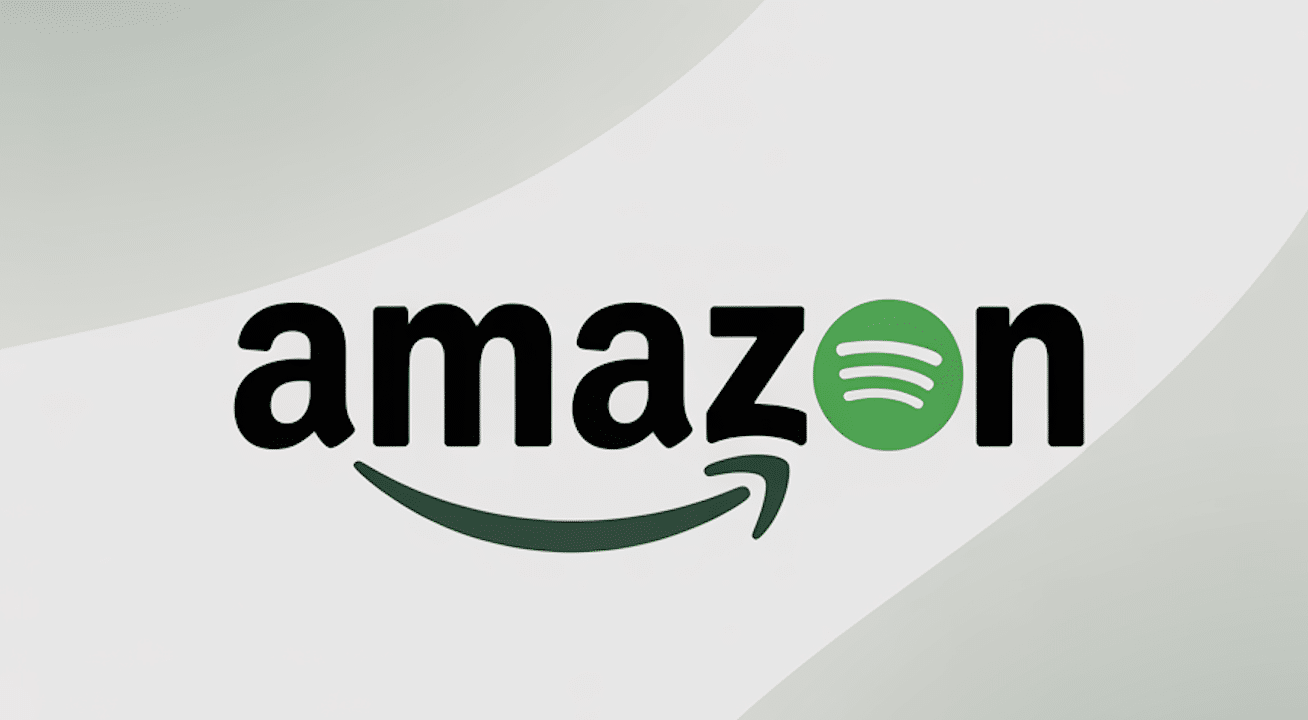How to Get Started with Amazon Sponsored Product PPC Ads – 2025 Guide
Amazon is getting more competitive every day. Read to the end for next-level PPC advertising tips to help you to dominate your niche!
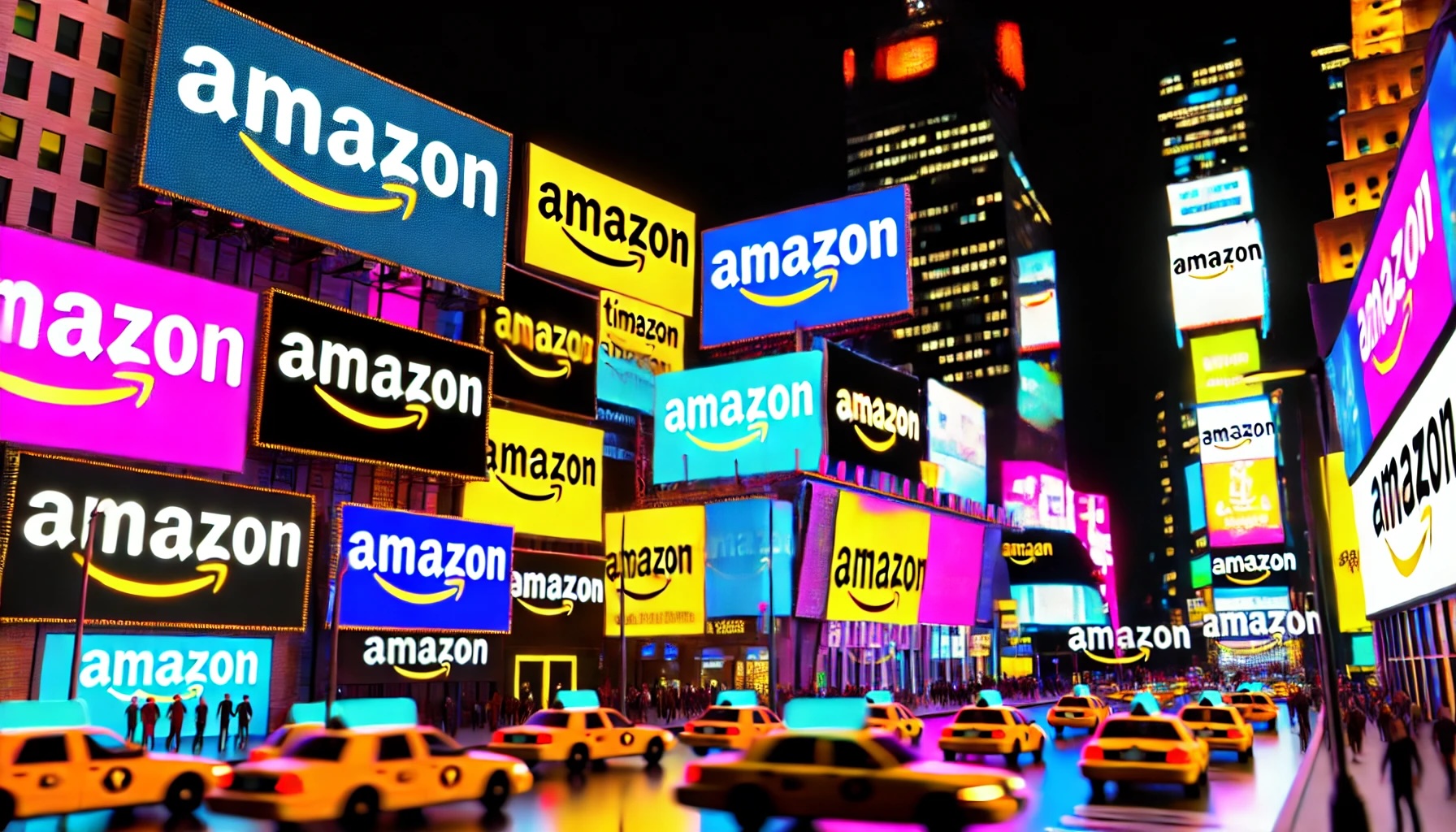
Table of Contents
- Why Amazon PPC Matters More Than Ever
- The Competitive Landscape in 2025
- What is Amazon PPC Advertising?
- How to Find High-Performing Amazon Keywords
- Understanding the Amazon PPC Auction
- Amazon PPC Vocabulary 101
- Getting Started With Sponsored Product Ads
- 3 Big Reasons to Use Sponsored Product Ads
- Who Can Use Sponsored Product Ads?
- How Much Do Sponsored Product Ads Cost in 2025?
- Next-Level PPC Strategies for 2025
- Off-Amazon Advertising Opportunities
- How Canopy Management Can Help
- Frequently Asked Questions
Why Amazon PPC Matters More Than Ever
Let’s imagine that you already have a great Amazon product. You’ve done your research and know that there’s a solid market for that product. Maybe you’re already making sales.
People WANT to buy it!
Wondering why you need to spend your hard-earned money on Amazon pay per click (PPC) advertising in the first place?
Amazon is not just a huge marketplace, it’s also the world’s most powerful, sales-oriented search engine.
Look at it this way…
On Google, there may be a number of reasons why someone is using a particular keyword in a search. They might be writing a blog post, finishing a school assignment, or doing research for a new patent.
If they’re searching for that same keyword on Amazon, it’s because they’re ready to buy.
But . . .

The Competitive Landscape in 2025
You’re not alone on Amazon
There are now over 9.7 million Amazon sellers worldwide, though only 1.9 million are actively selling. This actually creates opportunities—there’s been a 30% drop in global competition in many categories, meaning more traffic per active seller than in previous years.
A large percentage of those active sellers are watching the same videos and signing up for seemingly-cloned courses in their quest to make it onto Amazon’s first page.
Amazon is perfectly happy if everyone is a little bit successful. After all, they are going to get paid one way or the other. However, you are uniquely focused on your own success.
You are in COMPETITION with the rest of the sellers in your niche.
A first step for Amazon sellers is to make sure that your product is fully optimized. That’s the best way to stand out from the competition.
Once you’ve done that, you need to advertise your product so that prospective buyers actually see it. Studies have shown that Amazon PPC ad campaigns are 41% more effective for driving brand awareness than cross-media campaigns that don’t include Amazon ads.
That’s where Amazon pay per click advertising comes in.
Ready to Start Growing Your Amazon Brand?
Canopy’s Partners Achieve an Average 84% Profit Increase!
Find out moreWhat is Amazon PPC Advertising?
Amazon Pay-per-Click (PPC) advertising is part of Amazon’s internal advertising system. Using Amazon PPC, third-party sellers, brands, and agencies bid for specific keywords, products or categories to create advertisements for their products.
These advertisements then show up in Amazon’s search results, competitor product listings, and now even on external premium websites like Pinterest and BuzzFeed. With the pay-per-click model, you (as the advertiser) only pay Amazon when a shopper clicks on the ad. When a PPC campaign is managed and optimized well, it can significantly boost the product’s visibility and sales.
New in 2025: Amazon’s AI-powered systems now automatically adjust where and how your ads appear based on real-time shopper behavior, making campaigns more effective than ever.
Amazon Sponsored Ads are not only very effective, they also allow you to track the sales that your ads generate in order to identify which specific ads are driving conversions. That helps you more clearly understand what segment to double down on and SAVES you Amazon ad dollars.
Unfortunately, Amazon digital marketing can also feel overwhelming in the beginning. With multiple strategies as well as ad and campaign types, it’s sometimes difficult to determine how to allocate your ad spend.
To begin with, let’s look closer at those keywords that you’re bidding on. How do you find the best ones?
How to Find High Performing Amazon Keywords
It starts with research.
Amazon keyword research is the process of identifying and analyzing the specific words and phrases that potential customers use when searching for products on Amazon’s platform. The goal is to optimize product listings and advertising campaigns to improve visibility and increase sales.
For many sellers, the process begins with analyzing Amazon’s Search Term Report and auto-complete suggestions to pinpoint high-performing keywords, particularly those leading to sales and high click-through rates. In a lot of cases, it is complemented by examining competitor listings using tools like Helium 10 or Jungle Scout to uncover successful keywords and identify potential gaps in the market.
To get started, dig into customer reviews of both your own and competitors’ products to look at the common phrases and natural language terms used by customers. You can also incorporate those terms into keyword strategies for more authentic, real-time product targeting.
AI Enhancement: In 2025, 34% of Amazon sellers now use AI tools to help create and optimize their keyword strategies, making the process more efficient and data-driven.
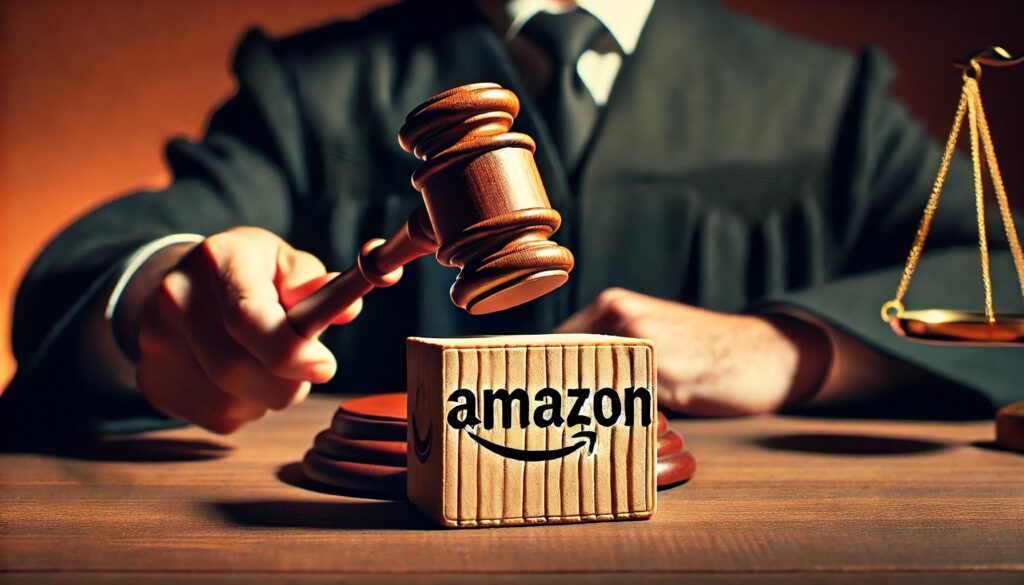
Understanding the Amazon PPC Auction
The cost per click (CPC) for each Amazon PPC ad is determined through a dynamic auction process where you, as the advertiser, bid on specific keywords relevant to your products.
Here’s how it works:
- Begin by selecting keywords you want to target and set a maximum bid amount for each keyword.
- When an Amazon shopper searches using one of these keywords, Amazon’s algorithm triggers an instantaneous auction.
- Amazon’s algorithm considers factors such as bid amount, ad relevance, and historical performance to determine ad placement.
- Amazon then awards the top ad positions to the highest-ranking bidders for that particular keyword.
- The winning Amazon advertiser pays one cent more than the next-highest bid. This is known as a second-price auction model.
For example, if you bid $1.00 on a keyword and the next highest bid is $1.25, you would win the auction but only pay $1.26 per click. This system helps encourage competitive bidding while establishing a fair baseline price for ad placements.
Ready to Start Growing Your Amazon Brand?
Canopy’s Partners Achieve an Average 84% Profit Increase!
Find out moreAmazon PPC Vocabulary 101
Amazon PPC comes complete with its own language. These are a few terms that you need to know before we look more closely at Amazon Sponsored Product Ads.
Advertising Cost of Sales (ACoS)
This reflects the percentage of attributed sales spent on advertising. It’s calculated by dividing total ad spend by attributed sales. For example, if you spent $8 onn advertising resulting in attributed sales of $40, your ACoS would be 20% ($8/$40 = 0.20).
Automatic Ad Campaign
With an automatic ad campaign, Amazon selects (for you) the keywords they think that you should target based on the information in your Amazon product listing: (title, bullet points, description, and keyword search terms).
Attributed Sales
Sales attribution tells you which specific ads are driving sales. It is a reflection of the total dollar value of your brand’s products sold to shoppers within 14 days of them clicking on your ad.
Clicks
The number of times your ads were clicked.
Click-Through Rate (CTR)
The number of clicks on your links divided by the number of impressions, expressed as a percentage. For example, if your links got 50 clicks for 1000 impressions, your click-through rate would be 50/1000 = 0.05, or 5%.
Impressions
The number of times your ads were displayed.
Keyword bid
The maximum cost you are willing to pay when someone clicks your ad.
Manual ad campaign
The seller chooses the keywords to be targeted in the ads.
New-to-Brand (NTB) Targeting (New in 2025)
Advanced targeting that allows you to specifically bid higher for shoppers who haven’t purchased from your brand in the past 12 months.
Return on Ad Spend (ROAS)
The revenue generated for every dollar spent on advertising. In 2025, the average Amazon seller achieves a 4.5x ROAS.
Sponsored Product ads
These are cost-per-click (CPC) ads that promote individual product listings on Amazon.
Sponsored Brand ads
These are cost-per-click (CPC) ads that feature a brand logo, a custom headline, and multiple products.Sponsored Display ads
Amazon’s latest ad product, these are cost-per-click (CPC) ads that allows brands to reach their audience with advanced product and category targeting, including ads that appear both on and off Amazon.
Getting Started With Sponsored Product Ads
If you’re just beginning your PPC campaign, Sponsored Product Ads will likely be the ad type you use, and it’s a good idea to master them before you move on to Sponsored Brand and Sponsored Display Ads.
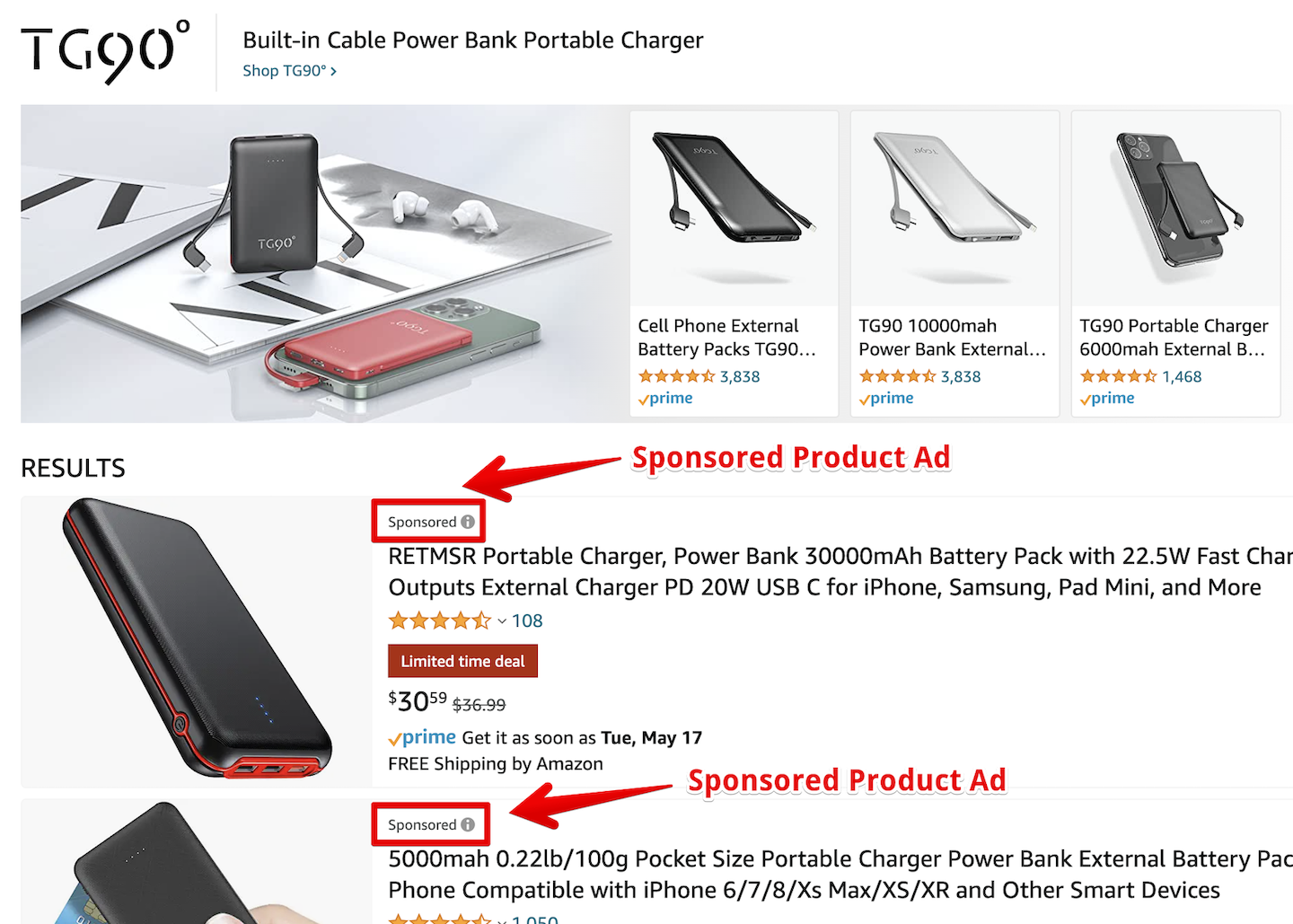
Sponsored Product Ads help you get your product listings in front of shoppers searching for similar products. With this ad type, buyers will discover and purchase your products that appear on product pages or in shopping results.
An advantage of this ad type is that they don’t look like an ad, except for the tiny “Sponsored” tag at the top of the listing. They fit perfectly into relevant search results and help to enhance shoppers’ experience (rather than distract from that experience).
An Amazon Sponsored Product Ad can appear in multiple locations:
- Above, below, or among search results on Amazon
- On Amazon product detail pages as part of an ad carousel
- New in 2025: On external premium websites like Pinterest, BuzzFeed, and other third-party destinations (automatically, no extra setup required)
Because of this expanded reach, Amazon Sponsored Products are more versatile than ever and can be used to achieve a range of marketing goals such as:
- Building brand awareness both on and off Amazon
- Driving traffic to product listings
- Generating sales
- Launching new products
- Clearing excess inventory
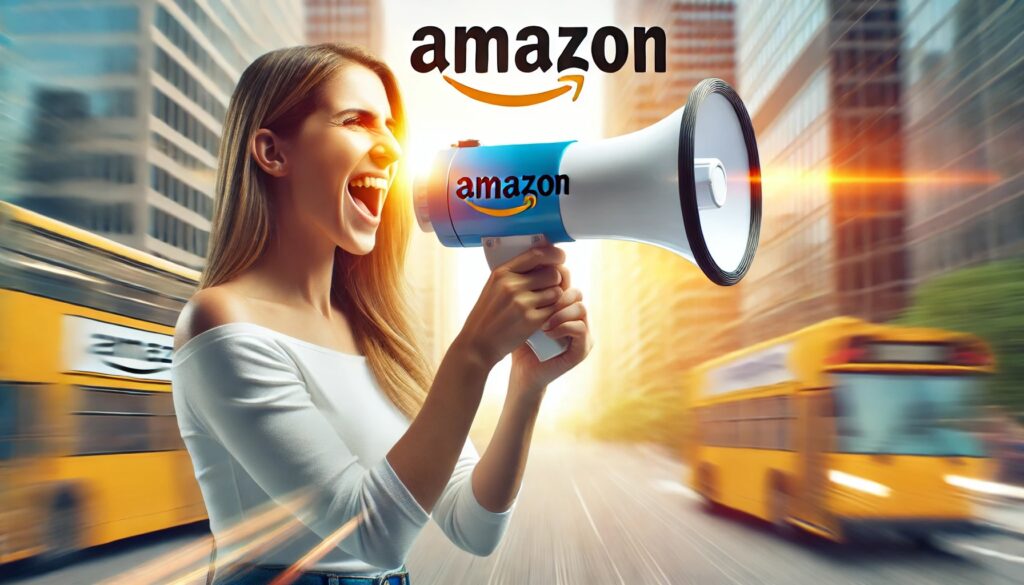
3 Big Reasons to Use Sponsored Product Ads
- They’re easy to create. You don’t need specific advertising or creative skills to get started. A Sponsored Products Ad generates ads from your own product listings and offers automatic targeting so you can begin advertising with no experience necessary.
- You can control your costs. A Sponsored Ad is cost-per-click (CPC), so you only pay when customers click your ads. Choose how much to bid per click and set your own budget.
- Use them to track your success. Take advantage of sales and performance metrics to measure the direct impact of your ads on your business.That information is how beginning Amazon PPC advertisers can become experts.
Bonus in 2025: Sponsored Products generate the most clicks, have the highest CTR, and produce the most revenue compared to other ad types, with nearly 75% of sellers using them as their primary advertising method.
Who Can Use Sponsored Product Ads?
Amazon Sponsored Product Ads are self-service ads that you can manage yourself or hand off to an experienced Amazon advertising agency or consultant.
Sponsored Product Ads are available for anyone selling on Amazon, including vendors, professional sellers, brands, agencies, book vendors, and Kindle Direct Publishing (KDP) authors.
Note: Products must be in one or more eligible categories and be eligible for the Featured Offer in order to advertise.
How Much Do Sponsored Product Ads Cost in 2025?
The cost-per-click for Amazon PPC ads typically ranges from $0.70 to $3.00 in 2025, with the average CPC around $0.98. However, the CPC can vary greatly depending on the product category, marketplace, and ad type. The cost moves up and down depending on the level of competition in your niche or for a particular placement.
Important 2025 Update: In competitive categories like supplements, electronics, or health & wellness, CPCs can exceed $5.00. Less competitive niches like handmade crafts or eco-friendly products may see CPCs around $0.50 to $1.00.
Rising Costs Alert: Amazon advertising costs have climbed steadily, with average CPC up over 10% from 2024. This is due to increased investment from brands and thousands of new sellers entering the platform.
An Amazon Sponsored Product Ad is the backbone of Amazon advertising. They’re able to support most advertising goals and can be extremely profitable if you know how to use them. That versatility is why many Amazon experts recommend putting up to 70% of your total ad budget into SPAs.
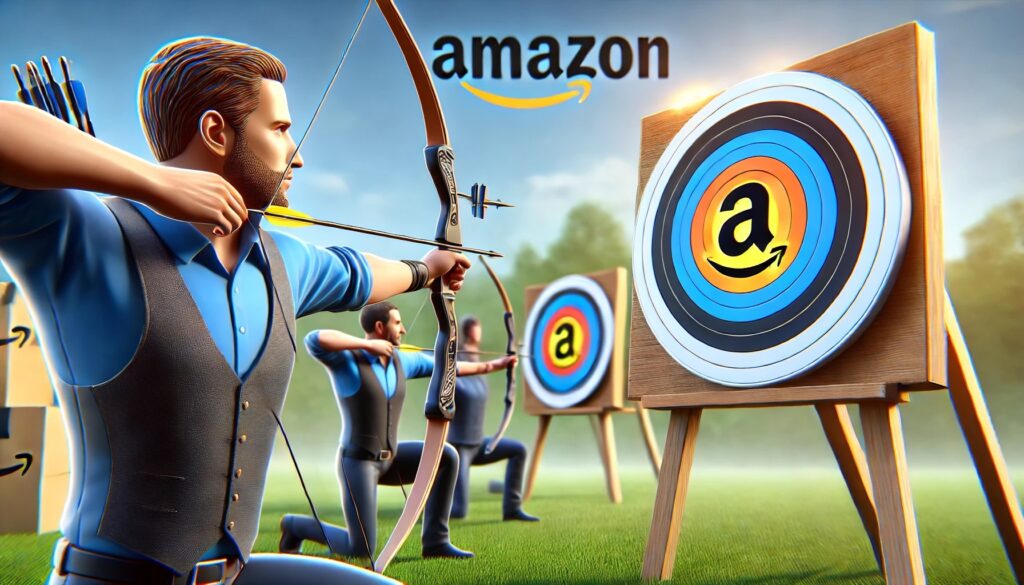
Next-Level PPC Strategies for 2025
As Amazon’s marketplace becomes increasingly competitive, clever sellers are turning to advanced Pay-Per-Click (PPC) strategies – or in many cases, Amazon PPC agencies – to gain an edge.
These next-level techniques go beyond basic keyword bidding and campaign structuring, offering more nuanced ways to optimize ad performance and maximize return on investment. By leveraging data-driven insights and Amazon’s sophisticated targeting options, you can fine-tune your campaigns for peak efficiency and effectiveness.
Advanced strategies such as dayparting, negative keyword optimization, and product targeting allow you to fine-tune your campaigns, maximize ad spend efficiency, and adapt to Amazon’s evolving algorithm. These advanced techniques make it more likely that you can stay ahead of your competitors, and greatly improve your return on ad spend (ROAS).
In 2025, simply bidding on keywords is often not enough to guarantee success.
What is Dayparting?
Dayparting is a sophisticated Amazon PPC strategy that involves adjusting ad schedules – sometimes by the minute – based on peak shopping hours. As artificial intelligence has become more sophisticated, dayparting has become an important component of an overall ad campaign strategy.
By analyzing hourly sales data and considering industry-specific trends, you’re able to identify the most profitable times to run ads. Using Amazon’s dayparting features or third-party tools, you can create time-based campaigns with tailored bid strategies, maximizing ad spend efficiency during high-conversion periods.
How Does Negative Keyword Optimization Work?
Negative keyword optimization helps refine ad targeting and reduces wasted ad spend. This process involves regularly reviewing Search Term Reports to identify irrelevant search terms that trigger ads but don’t lead to conversions. As an advertiser, you can implement negative exact, phrase, and broad match types to exclude these terms, ensuring ads are shown only to the most relevant audience. However, caution is needed when using broad match negatives to avoid over-restricting ad visibility.
Drill Down With Product Targeting Strategies
Product targeting strategies offer a powerful way to reach specific customer segments. ASIN targeting makes it possible for your ads to show alongside complementary products or competitor listings, capturing comparison shoppers.
Category targeting increases visibility within relevant product categories, with refined options like price filters for precision. Brand targeting lets you play defense, attracting customers from your competitors while leveraging the popularity of well-known brands in your category.
AI-Generated Content
34% of Amazon sellers now use AI tools to create and optimize:
- Product listings and keyword strategies
- Ad copy and creative content
- Performance analysis and recommendations
Off-Amazon Advertising Opportunities
Major 2025 Update: Amazon Sponsored Products now automatically appear on premium external websites, dramatically expanding your reach:
Automatic External Placements
Your Sponsored Products ads now appear on:
- BuzzFeed
- Hearst Newspapers
- Raptive
- Ziff Davis
- Other premium third-party destinations
Configuration Options
Amazon offers two strategic approaches for off-Amazon placements:
Maximize Reach (Default)
- Prioritizes broader exposure
- Uses existing targeting to expand reach
- Increases potential impressions off Amazon
- Creates more sales opportunities beyond Amazon’s marketplace
Minimize Spend
- Focuses on cost control
- Optimizes ad delivery for reduced spending
- Controls impression frequency off Amazon
- Provides strategic budget management for external placements
Best Part: This expanded reach requires no extra setup from advertisers—Amazon automatically showcases your ads on external sites when relevant buyer interest is detected.
How Canopy Management Can Help
As Amazon’s marketplace becomes increasingly competitive, Amazon advertising has grown in complexity. It’s no longer enough to have “good business instincts” as many entrepreneurs do.
It’s a different ballgame now.
That’s why many experienced Amazon sellers reach out to the team at Canopy Management. Our expert Amazon Creative Services, PPC and DSP pros are a big part of why Canopy partners show an 84% average profit increase.
Want to be part of the Canopy Tribe? Find out more right here.
Canopy Management is a full-service marketing agency for Amazon, Walmart, and TikTok sellers. Our team consists of multi-million dollar, omni-channel entrepreneurs, industry leaders, and award-winning experts.
Our Services Include:
- Strategic Growth Planning
- Listing Copywriting Optimization
- Listing Photography
- Product Videography
- Advertising Management
- Customer Service
- Demand Side Platform (Amazon DSP)
- Amazon Posts
- Full Service Management
- Amazon Review Aggregation
Frequently Asked Questions
What’s the minimum budget needed to start Amazon PPC?
There’s no minimum budget requirement for Amazon PPC campaigns. You can start with as little as $5-10 per day. However, most successful sellers recommend starting with at least $20-30 per day per campaign to gather meaningful data and achieve consistent results.
How long does it take to see results from Amazon PPC?
Most sellers begin seeing clicks and initial data within 24-48 hours of launching a campaign. However, it typically takes 2-4 weeks to gather enough data to make informed optimization decisions. Significant performance improvements usually occur within 30-60 days of consistent optimization.
Should I use automatic or manual campaigns?
Start with automatic campaigns if you’re new to Amazon PPC or launching a new product. Automatic campaigns help you discover high-performing keywords that you can later use in manual campaigns. Once you have keyword data (usually after 2-4 weeks), create manual campaigns for better control and optimization.
What’s a good ACoS (Advertising Cost of Sales)?
A “good” ACoS varies by product category, profit margins, and business goals. Generally:
- 10-20% ACoS: Excellent performance
- 20-30% ACoS: Good performance
- 30%+ ACoS: May need optimization
Remember, if your ACoS equals your profit margin, you’re breaking even on ad spend while potentially gaining organic ranking benefits.
How do I know if my keywords are too expensive?
Use the 2.5% Rule: Your target cost-per-click should be no more than 2.5% of your product’s sales price. For example, a $40 product should have CPCs under $1.00. If keywords consistently exceed this threshold, consider:
- Targeting long-tail keywords
- Improving your conversion rate
- Adjusting your product pricing strategy
Can Amazon PPC help with organic rankings?
Yes! Amazon PPC can significantly boost organic rankings through:
- Increased sales velocity
- Enhanced keyword relevance signals
- Improved conversion rates
- Higher click-through rates The sales generated from PPC campaigns send positive signals to Amazon’s algorithm, often resulting in better organic search positions.
What’s the difference between Sponsored Products, Sponsored Brands, and Sponsored Display?
Sponsored Products:
- Promote individual product listings
- Appear in search results and product pages
- Don’t require Brand Registry
- Best for driving immediate sales
Sponsored Brands:
- Feature brand logo, headline, and multiple products
- Require Brand Registry
- Best for brand awareness and consideration
- Include video ad options
Sponsored Display:
- Target audiences based on interests and behaviors
- Appear on and off Amazon
- Great for retargeting and prospecting
- Help with full-funnel marketing
How often should I optimize my campaigns?
Weekly: Review performance metrics, search term reports, and adjust bids for high-performing keywords.
Bi-weekly: Add negative keywords, pause underperforming keywords, and analyze competitor activity.
Monthly: Conduct comprehensive campaign reviews, adjust budgets, and implement new strategies.
Quarterly: Evaluate overall account performance, restructure campaigns if needed, and plan seasonal adjustments.
What are the most common Amazon PPC mistakes to avoid?
- Setting budgets too low: Insufficient budget prevents ads from running consistently
- Ignoring negative keywords: Leads to wasted spend on irrelevant searches
- Not using match types strategically: Missing opportunities for precise targeting
- Focusing only on ACoS: Ignoring other important metrics like conversion rate and click-through rate
- Not optimizing product listings: Poor listings hurt ad performance regardless of bid amounts
- Overlapping campaigns: Multiple campaigns targeting the same keywords can increase costs
How do I track the success of my Amazon PPC campaigns?
Key metrics to monitor include:
- ACoS (Advertising Cost of Sales): Total ad spend ÷ attributed sales
- ROAS (Return on Ad Spend): Revenue ÷ ad spend (aim for 4.5x or higher)
- CTR (Click-Through Rate): Should be above 0.5% for most categories
- Conversion Rate: Percentage of clicks that result in sales
- Cost Per Click (CPC): How much you pay per click
- Impression Share: How often your ads appear vs. total available impressions
Use Amazon’s Campaign Manager, Brand Analytics, and third-party tools like Helium 10 or Jungle Scout for comprehensive tracking and analysis.

